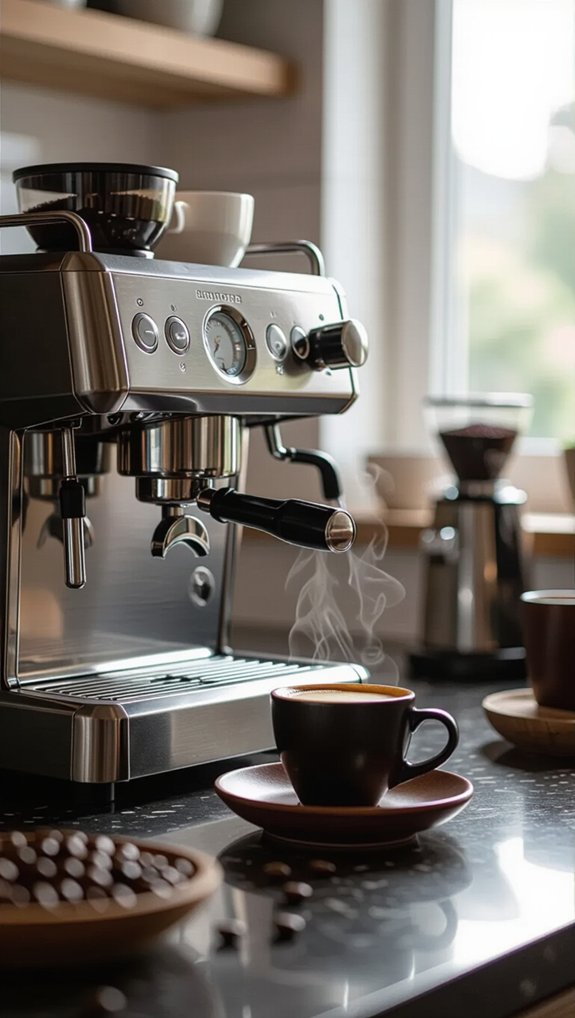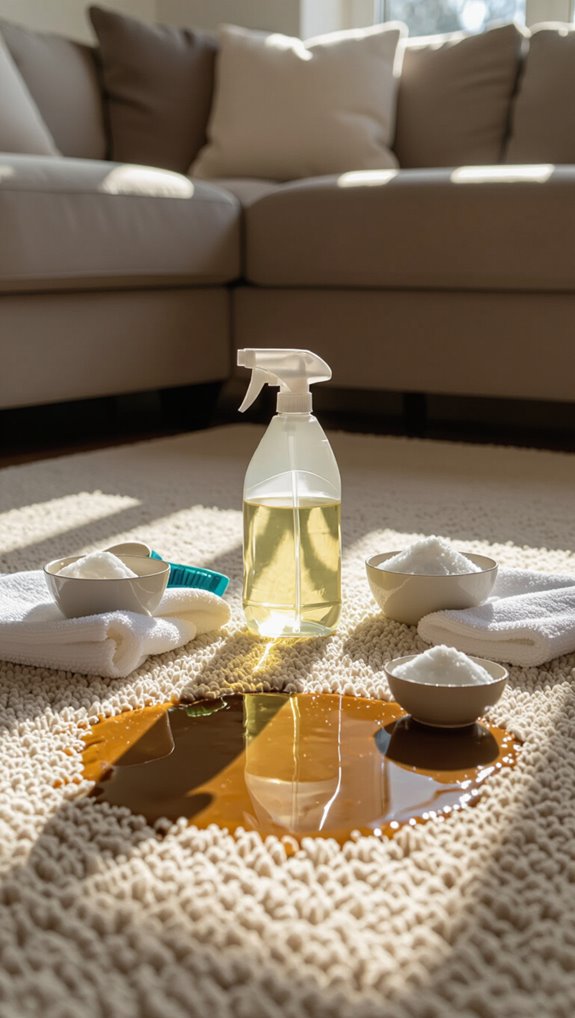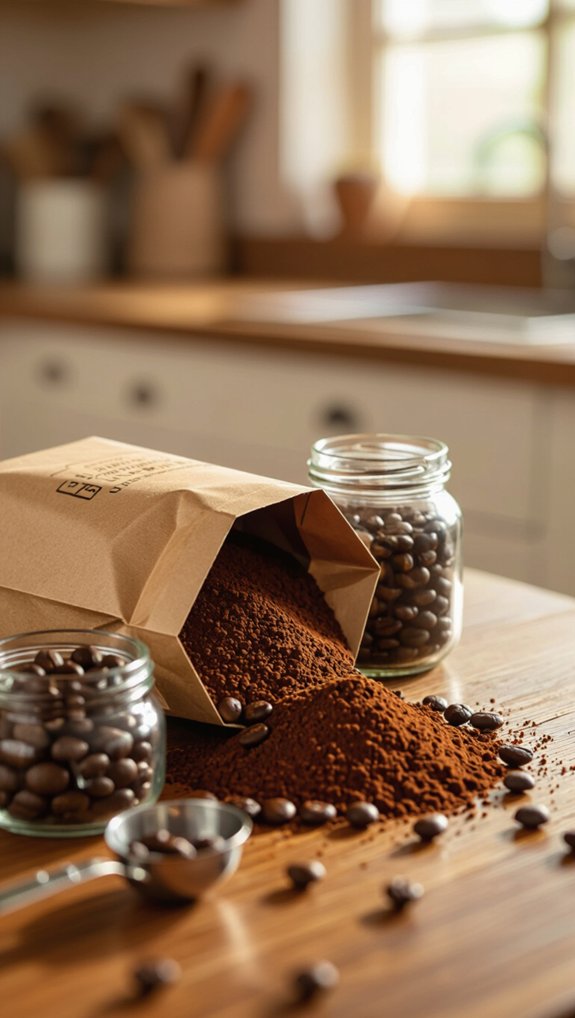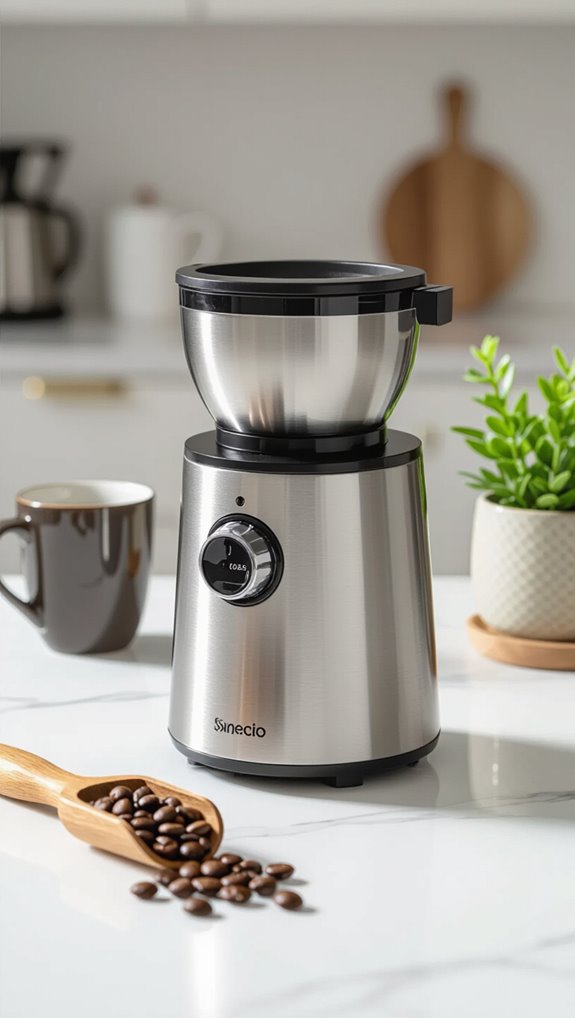According to the FDA, nearly 80% of American adults consume caffeine daily, with espresso becoming an increasingly popular choice among coffee enthusiasts. Yet a 2023 study published in the European Journal of Preventive Cardiology found that exceeding safe caffeine limits can lead to increased heart palpitations, anxiety, and sleep disturbances—leaving many espresso lovers wondering where to draw the line.
If you’ve ever questioned whether your third or fourth shot of the day is pushing it, you’re not alone. The challenge isn’t just about following generic guidelines; it’s about understanding how your unique body chemistry, lifestyle factors, and existing health conditions interact with caffeine consumption.
In this post, we’ll explore the science-backed limits for espresso consumption, help you identify your personal tolerance threshold, and reveal the warning signs that indicate you’ve had too much. You’ll learn exactly how many shots are safe for different scenarios and discover practical strategies to maximize your coffee enjoyment without compromising your health.
Table of Contents
How many espresso shots is too much
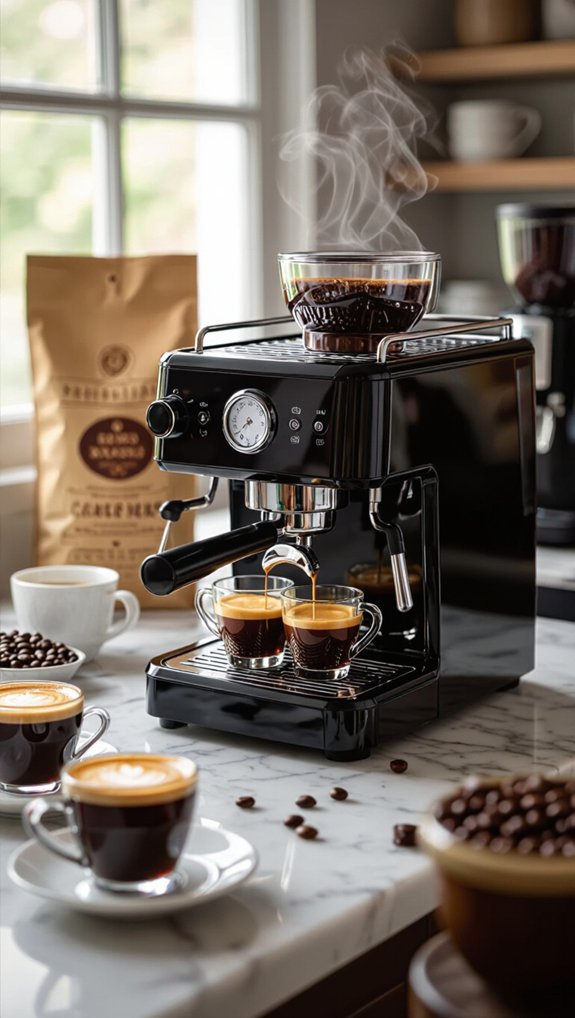
While everyone’s caffeine tolerance is different, most healthy adults can safely consume up to 6 shots of espresso daily without experiencing negative side effects. Antioxidant health benefits can provide additional wellness advantages beyond just the caffeine boost.
Your personal limit depends on factors like weight, metabolism, and overall health. Some folks might feel jittery after just 1-2 shots, while others can handle more.
Key warning signs you’ve had too much include:
- Rapid heartbeat
- Anxiety
- Stomach upset
- Shaking
- Sleep disruption
The FDA recommends staying under 400 mg of caffeine daily.
Always listen to your body and adjust accordingly.
What counts as one espresso shot
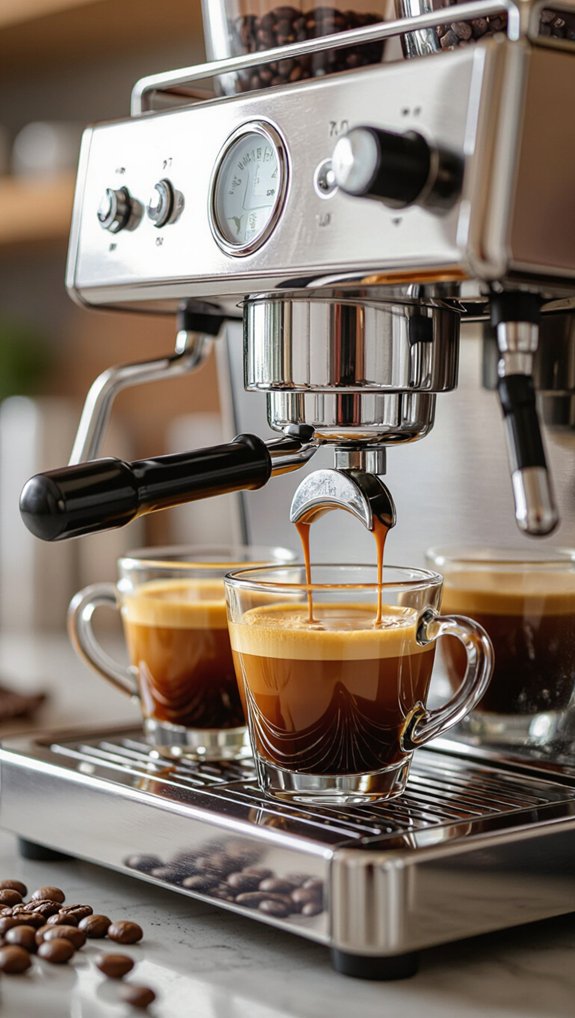
A shot of espresso isn’t just a random pour—it’s a precise coffee craft measured by both volume and weight. Most coffee professionals agree that a standard single shot contains 1 fluid ounce (30ml) and requires 7-9 grams of finely ground coffee. Check out this quick reference table:
| Measurement | Single Shot | Double Shot |
|---|---|---|
| Volume | 1 oz | 2 oz |
| Coffee | 7-9g | 14-18g |
While traditional Italian standards slightly vary, modern cafés typically follow these measurements. Interestingly, volume alone doesn’t tell the whole story—the weight of coffee grounds significantly impacts flavor intensity and extraction. Espresso shot precision requires understanding the nuanced relationship between coffee grounds, extraction time, and brewing technique.
Daily caffeine limits most doctors recommend
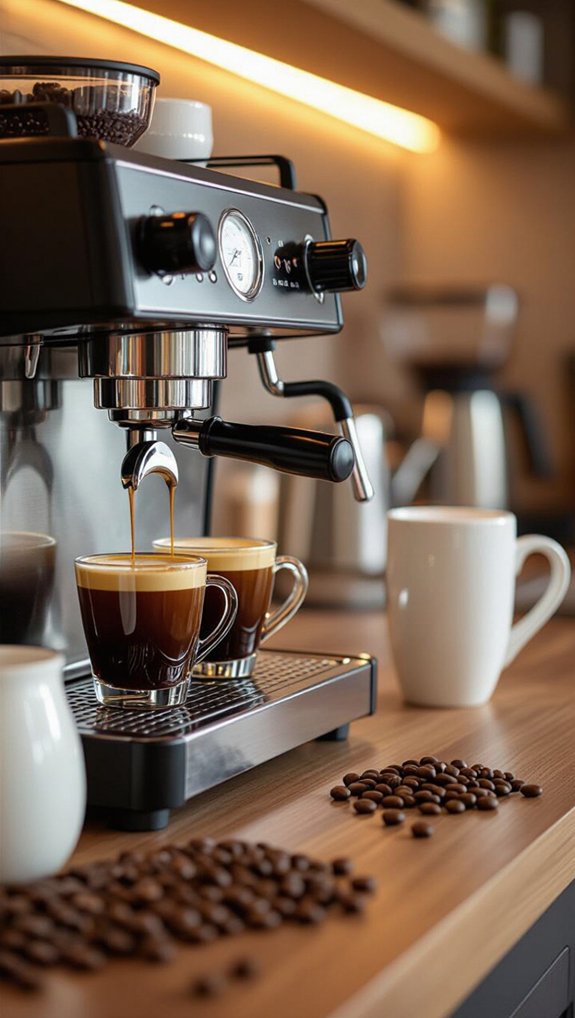
Daily caffeine limits most doctors recommend depend on individual factors.
Comprehending daily caffeine limits helps coffee enthusiasts enjoy their favorite beverage responsibly without risking health complications.
The FDA suggests healthy adults can safely consume up to 400 mg of caffeine daily—roughly four cups of coffee or six espresso shots. Pregnant women should restrict intake to 200 mg, while adolescents shouldn’t exceed 100 mg.
Individual sensitivity varies based on body weight, metabolism, and genetic factors. Blocking adenosine receptors can cause different physiological responses in each person. Always listen to your body and consult healthcare professionals if you experience adverse reactions to caffeine consumption.
Can I have three shots safely
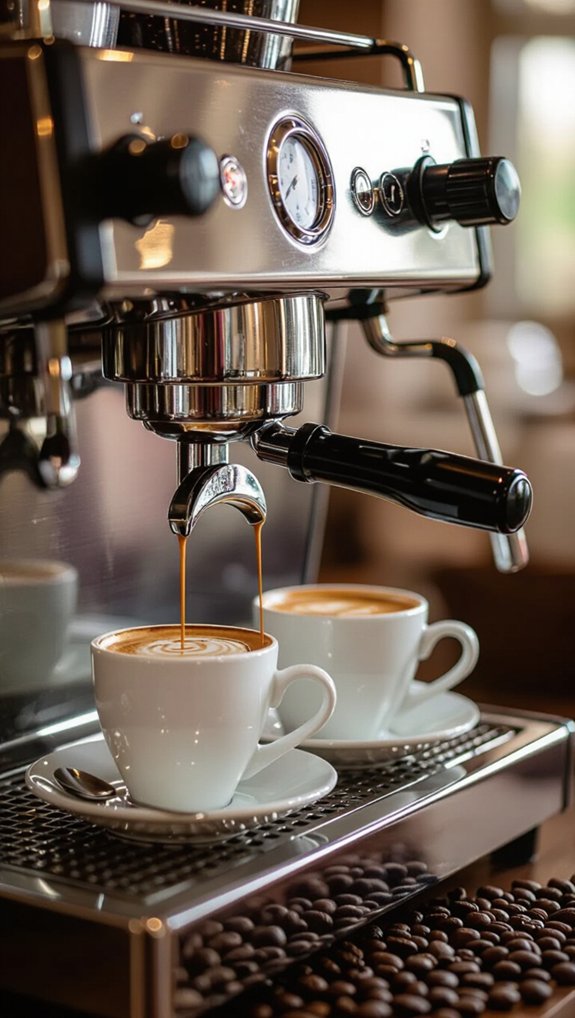
Can I Have Three Shots Safely?
Since most healthy adults can safely consume three shots of espresso, you’ll be pleased to know this falls well within recommended daily caffeine limits. The average triple shot contains 180–300 mg of caffeine, which is comfortably under the 400 mg daily threshold for adults.
Individual factors like metabolism, genetics, and overall health impact your personal tolerance. If you’re sensitive to caffeine, you might experience jitters or increased heart rate. Pay attention to your body’s signals and adjust consumption accordingly.
Pro tip: Spread your shots throughout the day to minimize potential side effects.
Risks from too many espresso shots

While three espresso shots might seem safe, pushing beyond that limit can unleash a cascade of potential health risks you’ll want to understand.
Excessive espresso consumption triggers serious physiological responses that can compromise your well-being:
- Heart palpitations racing faster than your morning commute
- Digestive system churning like an internal storm
- Anxiety levels spiking beyond your caffeine comfort zone
- Potential seizures disrupting your nervous system
- Sleep patterns fragmenting into restless fragments
Your body sends clear warning signals when caffeine intake crosses healthy thresholds.
Individual tolerance varies, but staying mindful of your consumption prevents potential neurological and cardiovascular complications.
Signs you’ve had too much caffeine
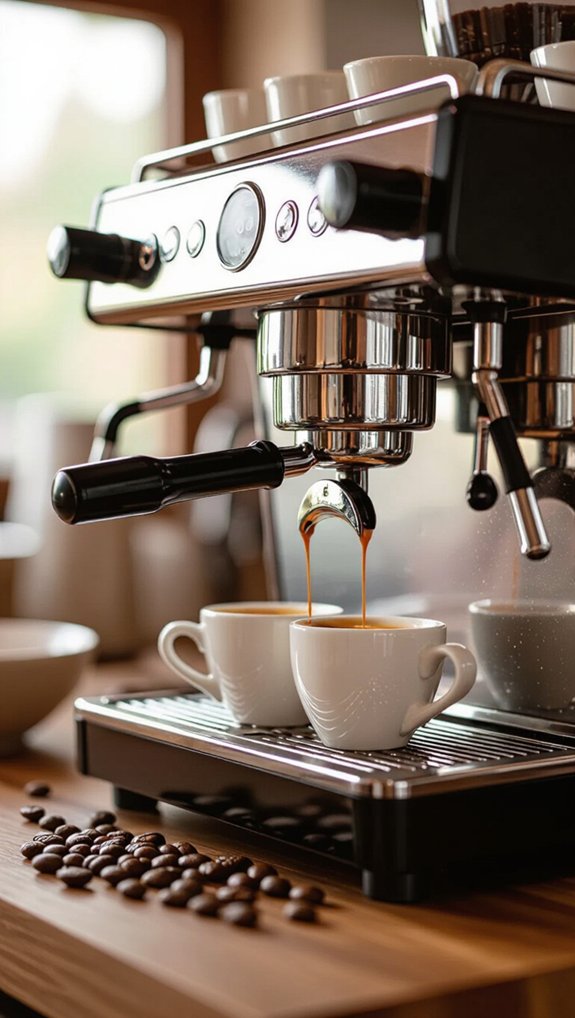
Frequently, your body will signal that you’ve consumed too much caffeine through a series of unmistakable physical and mental warning signs.
| Physical Symptoms | Mental Effects |
|---|---|
| Racing heartbeat | Anxiety |
| Trembling hands | Restlessness |
| Increased sweating | Irritability |
| Headache | Difficulty concentrating |
Your caffeine threshold varies, but common indicators suggest you’ve overdone it when experiencing multiple symptoms simultaneously. Rapid breathing, nausea, and dizziness aren’t just random occurrences—they’re your body’s desperate communication that you’ve crossed the line. Pay attention to these signals; they’re protecting you from potential caffeine-induced stress and health complications.
Factors that change your safe amount

Because your caffeine tolerance isn’t a one-size-fits-all equation, multiple personal factors dramatically influence how many espresso shots you can safely consume. Your body’s unique metabolic landscape determines your caffeine limit, making individual variation key.
Key factors that shift your safe espresso intake include:
- Genetic metabolism speed
- Current medication interactions
- Existing health conditions
- Body weight and composition
- Age and hormonal status
Understanding these personal nuances helps you customize your espresso consumption. Whether you’re managing heart conditions, pregnancy, or navigating medication interactions, recognizing how these factors impact your caffeine tolerance ensures a safer, more enjoyable coffee experience.
When should I stop drinking espresso
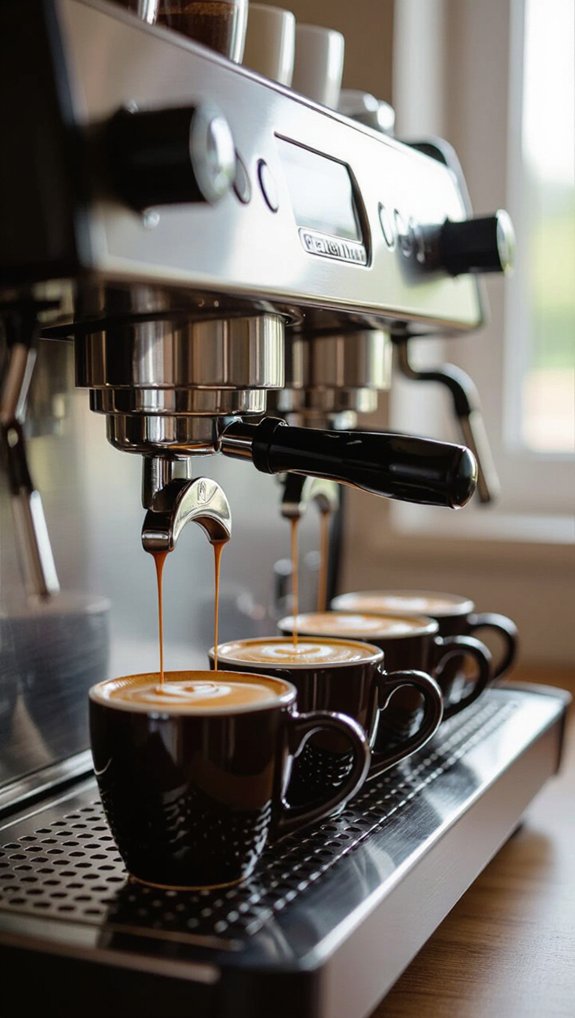
Monitoring your espresso consumption is crucial to preventing potential health risks and maintaining optimal well-being. Stop drinking espresso immediately if you experience rapid heartbeat, trembling, nausea, or sleep disruption.
These are clear warning signs that you’ve exceeded your personal caffeine tolerance. Your body weight, sensitivity, and daily habits influence how much is too much.
The FDA recommends no more than 400mg daily for healthy adults, which translates to about 5-6 espresso shots. Listen to your body’s signals and adjust intake accordingly to avoid anxiety, decreased concentration, and potential panic attacks.
Better choices at the coffee shop
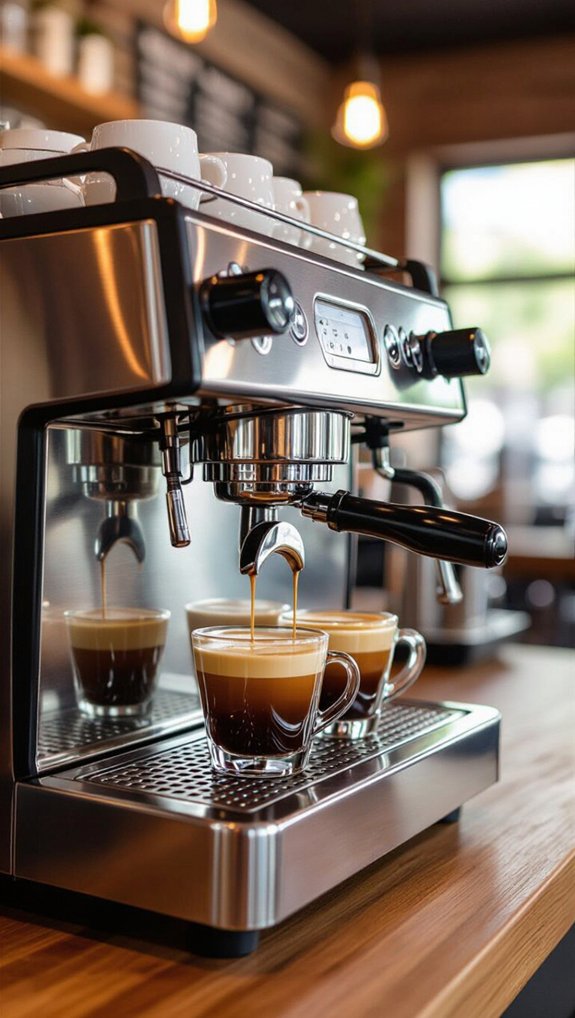
When you’re looking to make smarter espresso choices, the coffee shop menu becomes your strategic playground for healthier, more balanced caffeine consumption. Crafting a mindful order doesn’t mean sacrificing flavor or enjoyment. Instead, it’s about strategic selections that maximize taste while minimizing unnecessary calories and sugar.
Key strategies for smarter coffee shop choices include:
- Opt for black coffee or iced Americanos
- Choose espresso shots for concentrated caffeine
- Experiment with plant-based milk alternatives
- Request sugar-free syrups
- Add protein for sustained energy
These simple swaps transform your coffee experience from indulgent to intentional.
Cutting back without losing flavor today
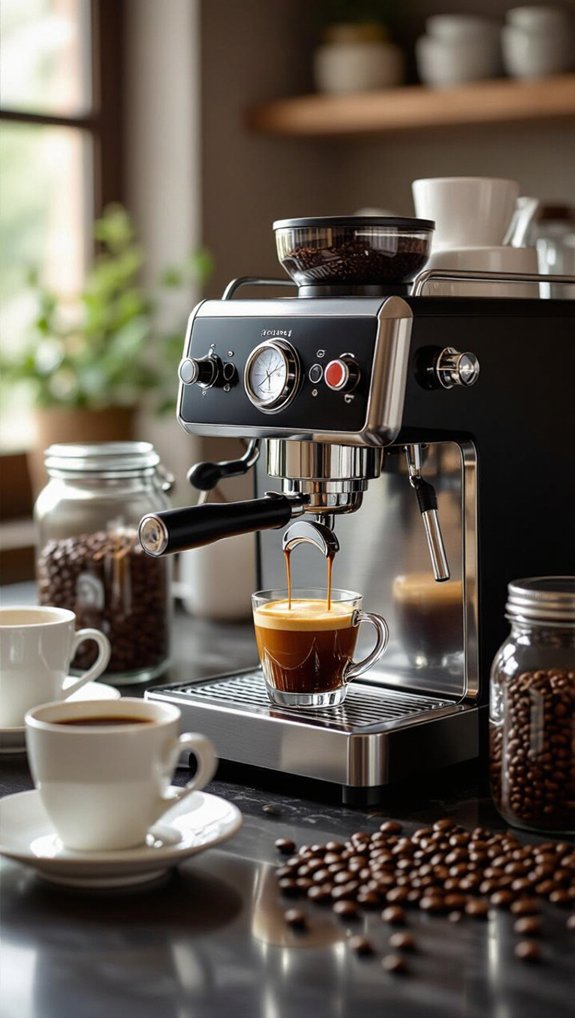
If you’re looking to reduce your espresso intake without sacrificing flavor, strategic caffeine management is your secret weapon.
Start by gradually reducing shots, maintaining consistent extraction parameters like grind size and brew time.
Use freshly roasted beans and adjust your technique: try a slightly finer grind, raise brewing temperature for light roasts, and employ precise tamping.
Experiment with brew ratios and consider replacing a shot with an Americano.
Track your variables meticulously, prioritize sensory awareness, and remember that flavor complexity isn’t just about quantity—it’s about quality and precision.
Frequently Asked Questions
Does Decaf Espresso Count When Tracking Caffeine Intake?
Yes, I count decaf espresso when tracking my caffeine intake. Though minimal, each shot contains 3-15.8 mg of caffeine. These small amounts can add up, so I’m careful to include them in my daily caffeine calculation.
How Long Do Caffeine Effects Last After Drinking Espresso?
I feel caffeine’s effects from espresso typically last 4 to 6 hours, with peak stimulation hitting around 30-60 minutes after drinking. However, individual metabolism varies, so my experience might differ from yours.
Can Pregnant Women Drink Any Amount of Espresso Safely?
Yes, I can safely drink espresso while pregnant if I limit myself to one or two shots daily, keeping total caffeine intake under 200 mg. I’ll track all caffeine sources and consult my healthcare provider for personalized guidance.
Will Espresso Shots Affect My Sleep if Consumed Late?
Based on the research, even espresso shots consumed 6 hours before bedtime can reduce my total sleep time by 41 minutes, increase wakefulness, and prolong sleep onset by up to 24 minutes, significantly disrupting my sleep quality.
Are There Differences in Caffeine Levels Between Espresso Brands?
Yes, there are significant caffeine differences between espresso brands. I’ve found Pret’s shots pack the most punch at 180mg, while Caffe Nero’s are lightest at 45mg. Costa sits mid-range at 100mg per single espresso shot, offering moderate caffeine intensity.
In Conclusion
Understanding how many shots of espresso is too much comes down to knowing your body and respecting your limits. While most adults can safely enjoy up to 6 espresso shots daily, the real answer varies from person to person. Pay attention to signals like jitters, anxiety, or sleep disruption—these are your body’s way of telling you to cut back. Track how you feel throughout the day and spread out your shots to find your personal caffeine sweet spot.
If you’re serious about your espresso habit, investing in a quality machine at home can help you maintain better control over your intake while saving money in the long run. Check out our comprehensive espresso machine reviews to explore smart, well-reviewed options that fit different budgets and skill levels. Whether you’re a casual sipper or an espresso enthusiast, the right equipment can elevate your coffee experience.
Remember, everyone’s caffeine tolerance differs, so what works for your coffee-loving friend might not work for you. Stay mindful, listen to your body, and enjoy your espresso responsibly for the best possible experience.

